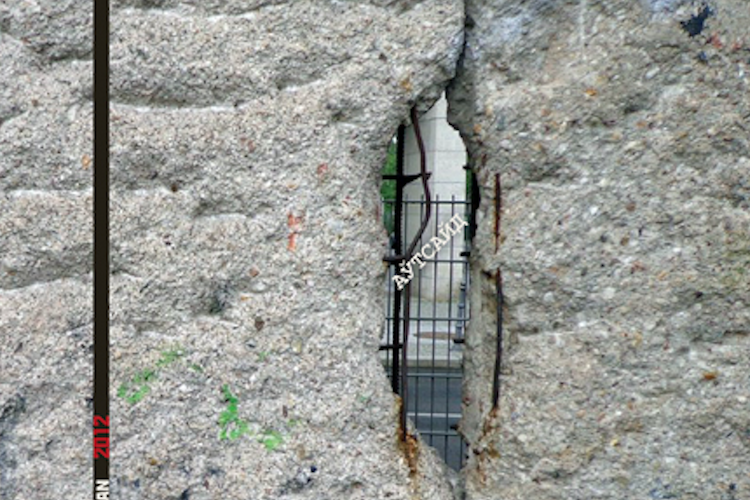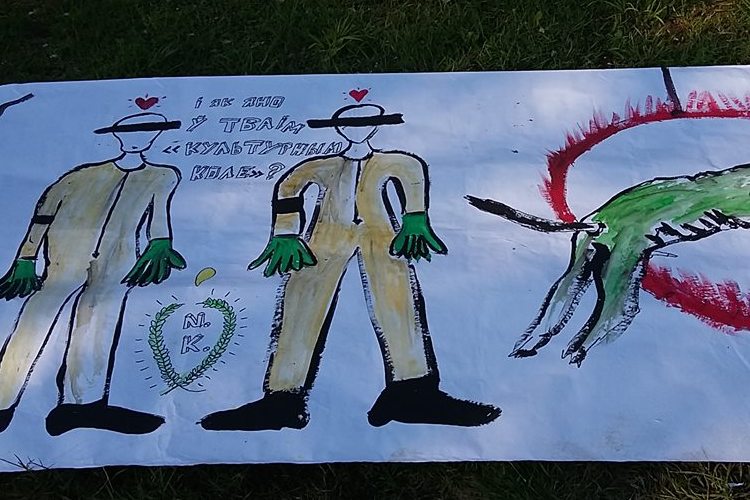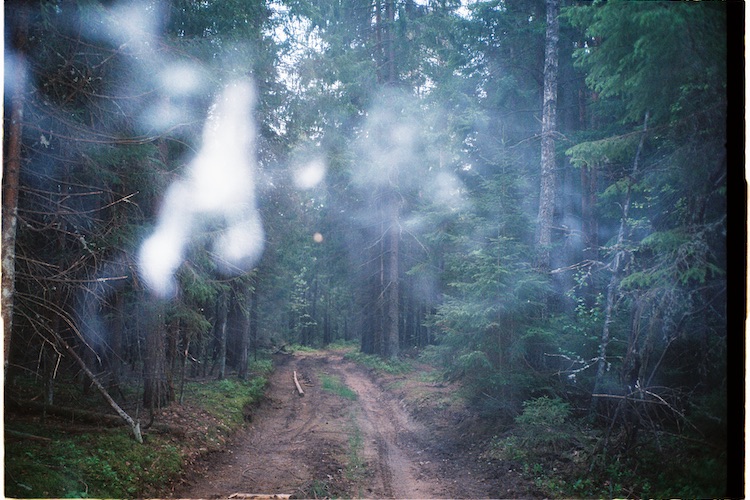
Аўтар: Volha Bubić, 18/03/2014 | ART Cult Aktivist project TOP
PRESENT CONTINUOUS, or PHOTOGRAPHY in ‘PROCESS’
Having learnt that a new photo-exhibition at ‘CECH’ art-space is named ‘Process’, the first thing that comes to one’s mind is certainly Franz Kafka. The story which starts with the absurd of nothing and ends up with the death of nothing, despair and foolishness of bureaucratic pitfalls as well as the painful omnipresence of Big Brother seem to be more than relevant.
Kafka blends harmoniously with the realities of the country where the announcers’ strict voices call public transport passengers to ‘save the forest’ and present travel documents ‘exclusively in the original’.

Alaksiej Navumćyk / Young Minsk (Y Minsk)
‘Process’? The show with such a name invariably anticipated in the audience the readiness to face sad projects about the lives of socially vulnerable groups or immerse themselves in some postmodern games with one’s consciousness. But the way the ‘CECH process’ was actually presented not only surprised, but in a sound way returned us to the correct semantic field. Indeed, even in our country, the process can not only occur in the courtroom. From the outset, any process is, above all, the natural course of thinking, searching, attempting to fix the sequence of intellectual and emotional stops on the way to success, which, in the format of the exhibition, is undoubtedly the birth of the photo project.
The same process which psychologists advise us to enjoy.
The same evolution which is now graciously ignored.
Formally, in the ‘CECH’ hall on February 25, 2014, the visitors could see what traditionally remains backstage. The meticulously prepared genesis of 11 photo-stories everyday artifacts (by Ksienija Avimava, Maryna Biehunkova, Taciana Zienković, Alaksiej Navumćyk, Alaksandr Michałković, Alaksandr Sajenka, Maksim Saryćau, Nastasia Chrałović, Volha Śukajla): from the handwritten notes of the first meeting with Russian photojournalists Andrew Polikanov, Yuri Kozyrev and Tatiana Plotnikova in March, 2013 to moleskin xerox-copies and screenshots of inspiring movies. And though not all the projects turned out to be equally meaningful and well-developed: all in all they do reflect a frank look inside oneself and show their interest in the chosen topic anyway captivating.
One can observe the heart-twisting story of violence in a series of Maksim Saryćau’s crippled dog; sliding up and down with the light dance movements in the Taciana Zienković’s emotional kaleidoscope; dangerous existential journey of Nastasia Chrałović’s; painstaking, almost laboratory plan, work with cold metaphor of porches and cemeteries by Alaksandr Sajenka and diverse in scope and tone visual diaries of flaneurs Alaksiej Navumćyk and Volha Śukajla. In most cases, we actually get involved into heart-to-heart conversation, which reveals the photographers’ courage to speak out loud about their errors or difficulties, to admit fears or doubts, love or admiration. Always discreet silent Belarusian suddenly gained the ability to experience emotions and moreover try to actually name what he/she feels. Not being afraid of showing one’s self, confess having preferences, not to stand aside.
Thus, ‘Process’ introduced viewers to a layer of the young Belarusian photographers interests, showed the attitude and the degree of comprehension in the approaches to the perception of our reality and ourselves in it. And these processes happened to be really exciting.
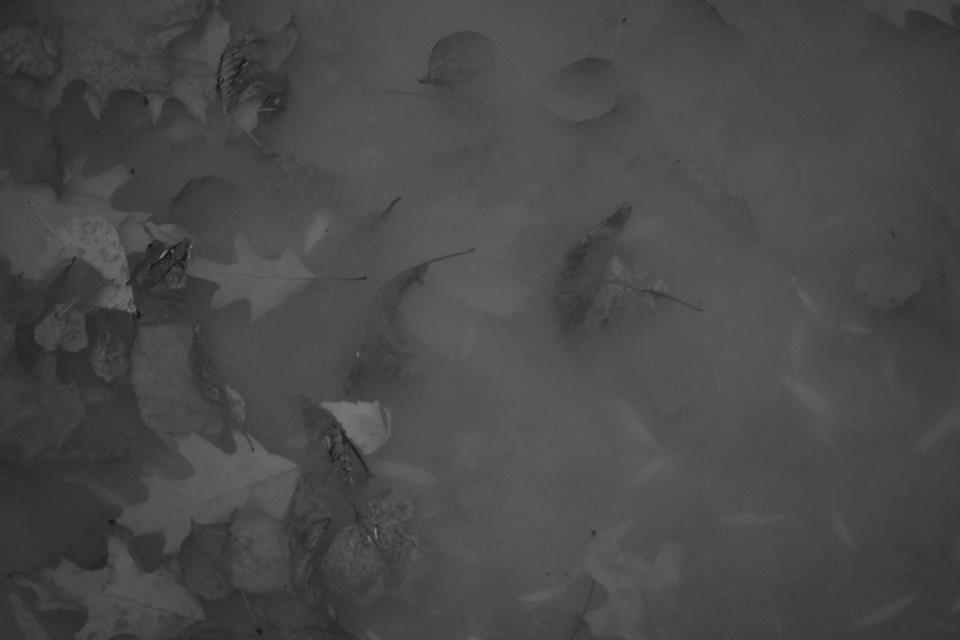
Nastasia Chrałović / The Solitude Diary. Chapter One. The Mirror
Face-to-face with Oneself: Nastasia Chrałović and Alaksandr Sajenka
A significant part of the exhibition photo projects covers topics specific to the collectivist culture, to which, according to researchers, we can refer the Belarusian one. This type of culture is inherent in a kind of ‘dissolution of individuality in society’, accompanied by difficulties in search aimed at understanding of oneself and his/her place in space. Due to this, projects by Nastasia Chrałović and Alaksandr Sajenka are characterised by a high degree of intense inward-looking arise a special interest.
Undoubtedly, the most intimate project seems to be a visual diary of self-reflection by Nastasia Chrałović. The series with the speaking name The Solitude Diary. Chapter One. The Mirror captures the painful search for the sense of self – the camera focus rushes from hypnotic still lifes reminding Lars Von Trier’s ‘Trilogy of Depression’ to seemingly careless portraits of truck drivers. Despite the seeming paradox, both parts are a reflection of the psychological processes that occur in the photographer’s mind.
All of them, citing Susan Sontag, are the ‘defense against anxiety’, incompleteness and incentive to the literal, physical ‘process’ of motion:
in the textual materials accompanying the series Nastasia explains her desire to set off to a journey with a familiar truck driver and to document her random encounters on the way.
‘There is too much noise around, to be a loner is now considered unacceptable. People are bored staying face-to-face with themselves, and they are happy to run away anywhere in order not to see or hear themselves ...’ – says the photographer in the project description. Accepting the rules of the game, Nastasia sets out on the road – the map printed from the Internet, marks her stops alongside the rout — however, the planned beforehand research does not stop. Photos from her ‘Diary’, somehow reminiscent of Rinko Kawauchi and Antoine D’Agata shoots, snatch instant flashes of revelation and seem to be more deep personal experience than really fixed fragments of Belarusian reality. Such frankness is captivating and truly touches a raw nerve.
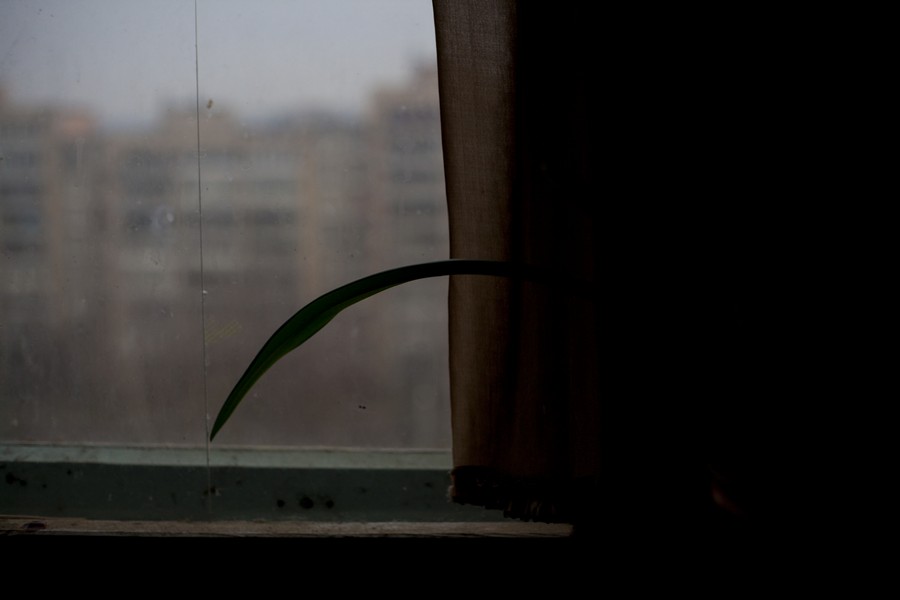
Photo: Alaksandr Sajenka
In his project Alaksandr Sajenka, another ‘Process’ participant, touches upon the theme of death – an almost taboo issue in our society. Feeling the metaphorical connection between traditional plastic or semi-dry flowers in the old five-story blocks of flats and flowers found in cemeteries, the photographer creates a series where the pulsating with contrasting lights portraits of people who passed away are combined with the hopelessness of flowers which had never seen the light.
The series seems really hard for perception, but nevertheless it is impossible to overlook it. Drawing our attention to the surroundings familiar to every Belarusian, Alaksandr tries not only to decode, but also to present his own interpretation of cultural signs. Those ‘flowers between the floors’ (the original title given to the series by Sajenka himself) become a sort of shadow catching mirror, which reflects existential fear of the irreversibility of time known to each of us.
This mood of memento mori, aimed at reminding you that your cozy space apartments are only the formal cell in the ‘multistoried densely populated coffin of its own kind’.
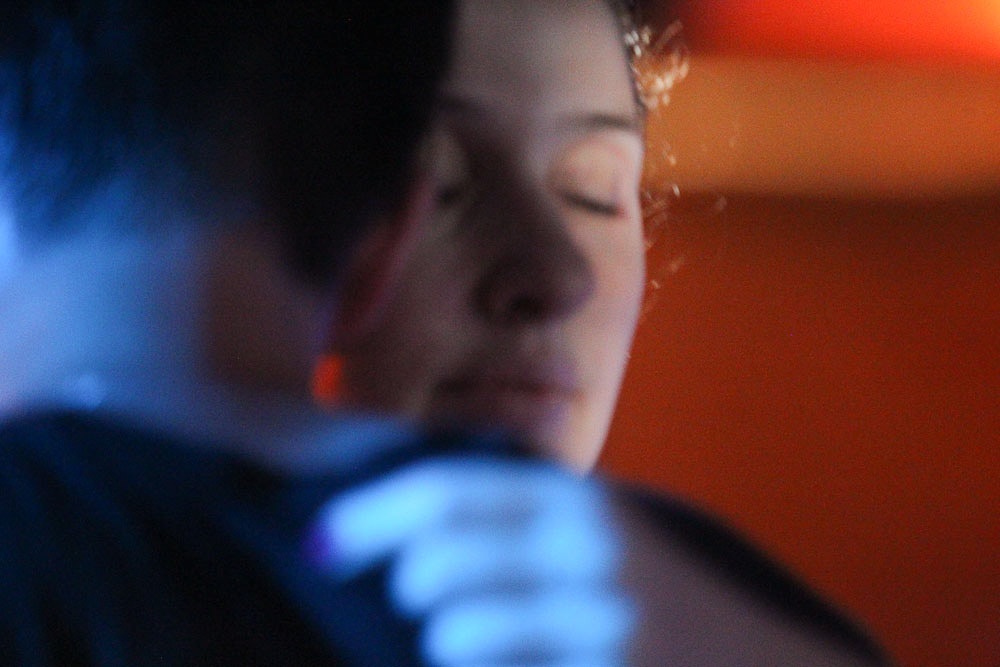
Photo: Taciana Zienković
Getting Involved: Taciana Zienković, Маryna Biehunkova, Maksim Saryćau
Several series presented in the show are dedicated to the topic of interpersonal relations per se. Taciana Zienković talks about modern dance as a form of communication and exchange of emotions, Maryna Biehunkova – about the everyday life of social workers. At the example of the problem of the attitude of the Belarusians to the disabled animals, Maksim Saryćau raises perhaps one of the most painful topics today — the theme of spiritual and moral sphere of the Belarusian society.
Shooting classes at the dance studio, Taciana managed to build a visual narrative line of almost cinematic nature — something between a kaleidoscope of Wong Kar-wai moods and Gueorgui Pinkhassov’s Tokyo series. Taciana managed to preserve her own non-verbal rhythm between the dynamics and incredible emotions, on the one hand, and close-up speaking details — on the other.
It is interesting to note that in most the shoots Barthe’s punctum can be traced in the image the hands of those who communicate through the rhythm. Here is a man’s hand shyly leaving some centimeters of a safe distance to avoid the physical contact with his partner. Those are almost embarrassing fingers clenched into fists. Here is a lady’s hand gently resting on a man’s shoulder. Looking at the dancing couples at a very close, almost intimate distance, Taciana is able to convey the whole depth of emotions experienced by the studio participants: be it sweet euphoria or tender timidity, narcissism or uncertainty of one’s first movements. And in general, all of this is, of course, extremely beautiful.
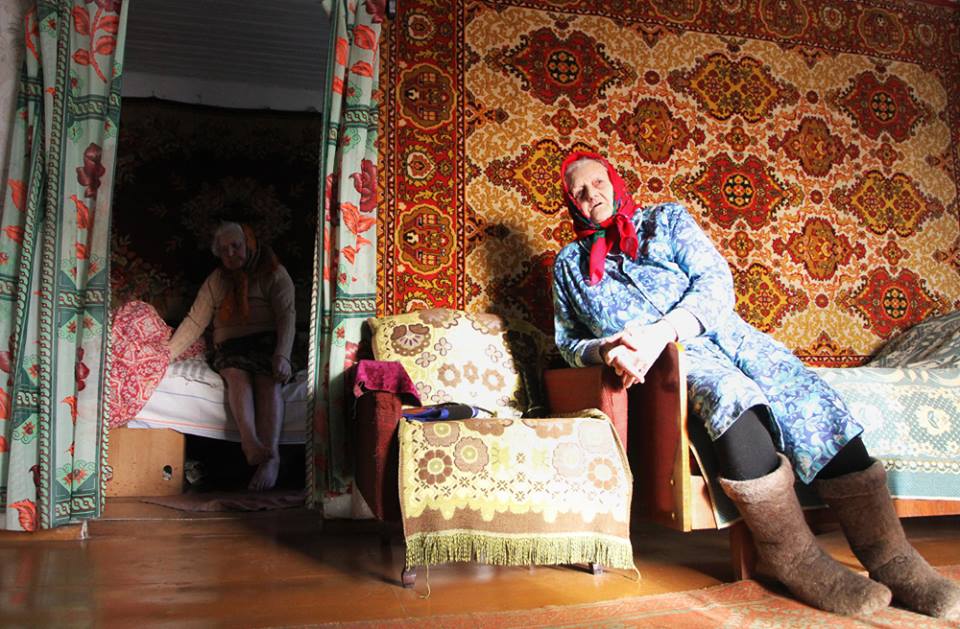
Maryna Biehunkova / When Strangers Become Family
Such a personal approach really stands out when compared, for example, with a series of another ‘Process’” participant — Maryna Biehunkova – who has presented a project about social workers called When Strangers Become Family. The theme chosen by Maryna Biehunkova is undoubtedly relevant, however, while observing the photos, we cannot discern any ‘strangers’ or ‘family’ there. In the photographs we see delicately prepared (and even seeming to be already published in the media) professional journalistic report. Women assisting retirees are busy with performing their professional duties: they wash windows, do injections, conduct conversations. And even the project’s name itself seems to have been overheard somewhere …
So, the series occurs to be very formal both in terms of correspondence to the overall concept of the exhibition: Maryna decided not to disclose the “backstage” process of how the project was prepared, developed and implemented. The compositions and identical impersonal safe angles are practically brought to formal perfection and fail to illustrate emotions and feelings within the declared opposition ‘strangers/family’. The shoots seem to be supporting more the opinion of one of the characters in Alejandro Inuaritu’s film ‘21 Grams’: ‘The main thing is do not get involved. The main thing is to stand aside’.
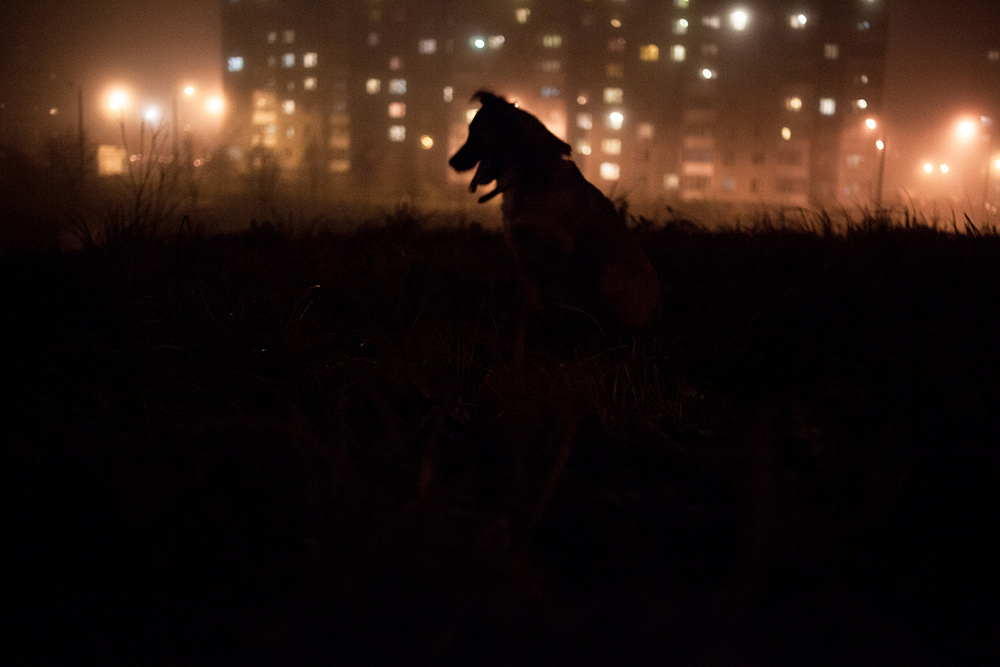
Maksim Saryćau / The Two-Pawed Friend
The poignant story of a disabled dog Loyd rescue told in the pictures and field artifacts by Maksim Saryćau appears to have a much more intense emotional load. It cannot leave uninvolved even the most distracted viewers, once again putting in doubts the myth of Belarusian tolerance.
A series The Two-Pawed Friend is undoubtedly characterized by advantages of the visual language chosed by the photographer. To raise in the audience empathy to the disabled dog’s destiny Maksim makes sound and logical use of various compositional techniques: angles, framing, the organization of the light. Plots revealing the scenes from Loyd’s life are loaded with genuine emotions. Looking into the dog’s eyes, observing the behavior of the people who surround him, moving alongside the locations skin-deep we feel his fear, bewilderment, gain hopes, learn to love and to believe in the goodness and compassion.
The quotations from internet forum discussions about the Loyd’s fate selected by Maksim Saryćau reveal shocking contrast. The sensitivity and empathy the photos are pierced with sharply confront the cruelty and indifference of the average Belarussian, far from being tolerant, who not only denies the relevance of the issue of stray animals, but demonstrates frank aggression to them. Such a clash with indifference seems to be throwing us to a completely different level of human needs, forcing to ponder over the issue:
is the Belarusian society ready at all to solve the problems that lie outside the range of the tags of ‘business’, ‘look’ and ‘sex’ imposed on us?
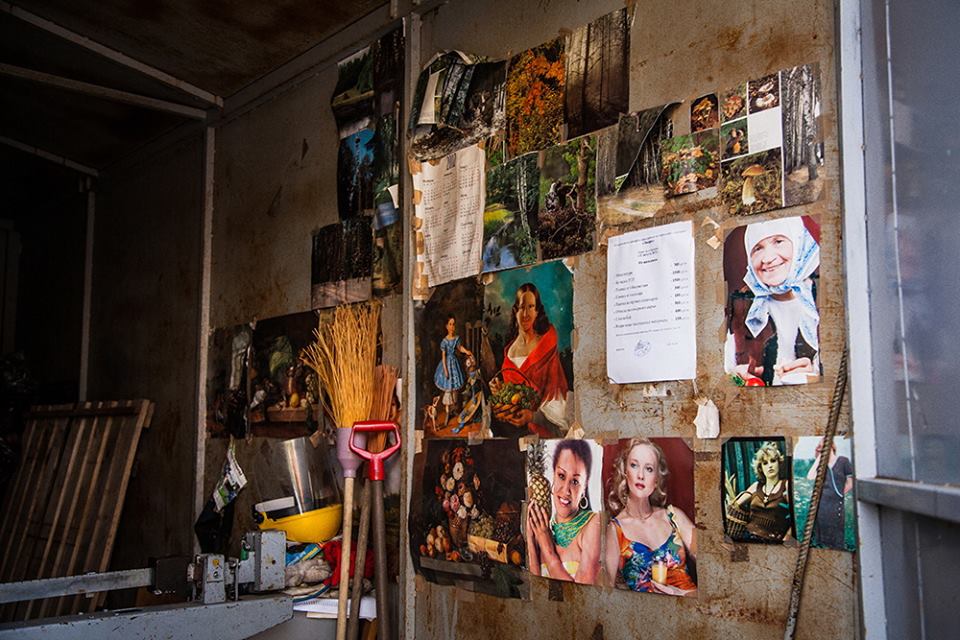
Volha Śukajla / The Northern Village
Observing the City: Volha Śukajla and Alaksiej Navumćyk
Two completely different interpretations of the urban space were presented in the photographic projects by Volha Śukajla (The Northern Village) and Alaksiej Navumćyk (Y Minsk).
Volha’s pastorals, despite her tender approach and probably sincere love for her native Northern Village, the name of which was proudly put into the project’s headline, unfortunately, due to lack of story-telling elements, seem almost artificial. Visual component is official postcard boring: looking at the pictures, it is hard to draw a conclusion about the village’s special features. How does it really appeal to the photographer? Where is its unique character? The project clearly lacks depth and thoughtfulness, logic and representational power.
Interestingly enough, the same theme – capturing urban spaces – was so wonderfully revealed a few months ago in the same art-space of ‘CECH’s in a series of another Belarusian photographer — Alaksandra Saldatava, whose project City Holidays was selected for publication in the German catalogue ‘BY NOW’ by German curators Matthias Harder and Hans Pieler. While the Volha Śukajla’s pictures of the Northern village appear to be rather cautious pilot images of not yet fully understood and studied space, Minsk through Alaksandra Saldatava lens is a clear, mathematically anthropological problem and finding its solution through the act of looking each time brings you aesthetic and intellectual pleasure.
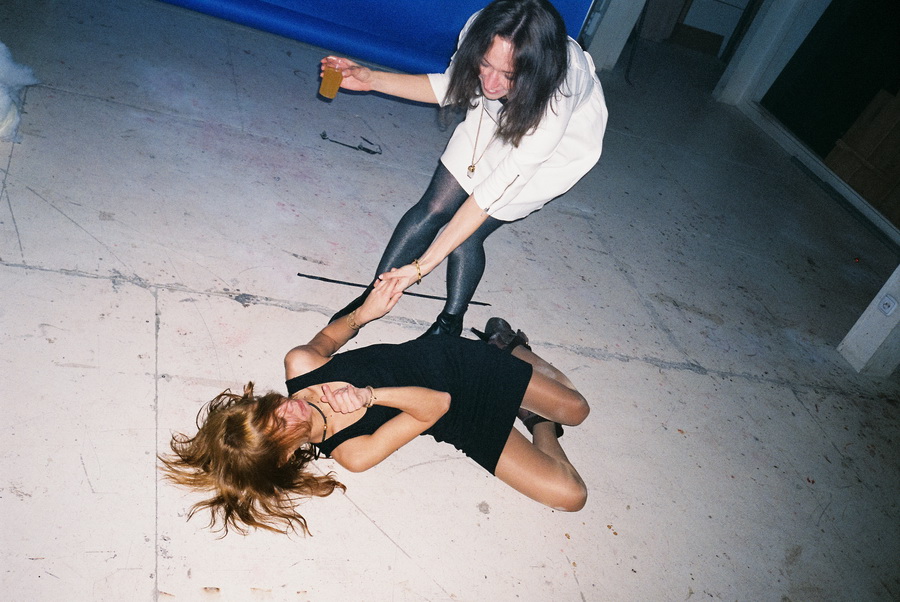
Alaksiej Navumćyk / Y Minsk
The city in the Alaksiej Navumćyk’s series is filled with a completely different mood. Y Minsk is a kind of the sequel to the theme of the photographer’s personal research of the values of young urbanites accompanied with the visual emphasis shift to the question of self-determination in the period of transformation. To some extent, Alaksiej flirts with a popular form of representation of information in the capital’s glamorous editions: visual organization of a series on the three horizontal levels seems to be repeating the headings in the youth media. In the first row – the dumb ‘looks’ of scruffy unisex boys and ridiculously posing ladies. In the third one — impersonal, deprived of any cultural signs globalized ‘another’ Minsk.
‘It cannot be us! Where did he find all these hipsters? — smart university students protest, looking at the snapshots of ‘Y Minsk’. ‘But isn’t it wonderful that our youth today is so different?’ – a thought in my head appears.
Someone goes to see the ‘Nymphomaniac’ at the old Minsk cinema ‘Rocket’ longing to spy a cheesecake, others will get pleasure trying to recognize it in thin layers of meaning and allusions. By means of amateur aesthetics Alaksiej tells us about a young sleepless Minsk. And no matter how far what we see in the shapshots seems to us — we certainly do travel with them in the same trolleybus.
Observing the youth in the streets of the city, near the entrance to clubs, smoking or skating, Alaksiej as he frankly confesses, is constantly looking for his hero. Like a moderately distracted time archiver, he attempts to use separate visual fragments in order to create a subjective portrait of today’s youth. The photographer cannot but automatically compare himself with his subjects, trying to formulate his attitude towards those who keep up with the ever-changing city in a much more light-minded way.
Minsk, as well as we, our emotions and everyday life are really undergoing the constant change, beyond our control and desire.
The ability to turn this process into a more conscious phenomenon, meditate about the direction and depth of these changes constitute the reflection that takes place after visiting the exhibition ‘Process’. We still need to learn to enjoy the process and mediate it, appreciating evolutionary changes.
Volha Bubić
Opinions of authors do not always reflect the views of pARTisan. If you note any errors, please contact us right away.



